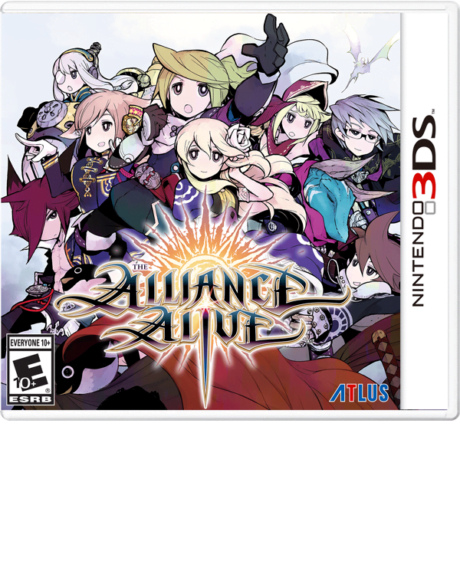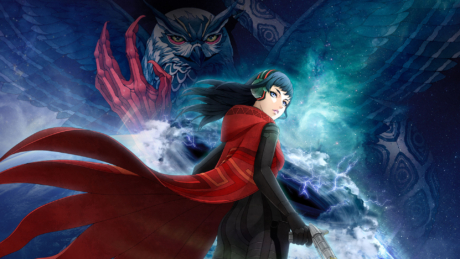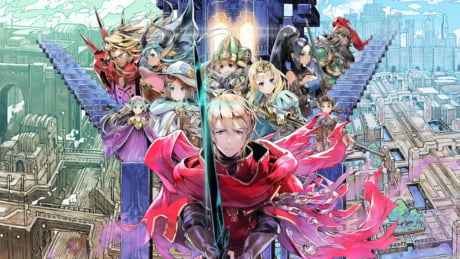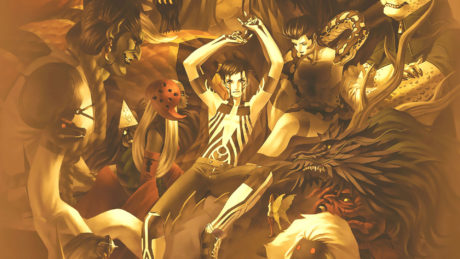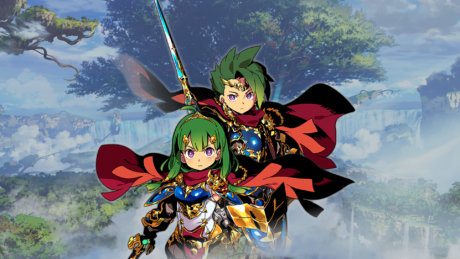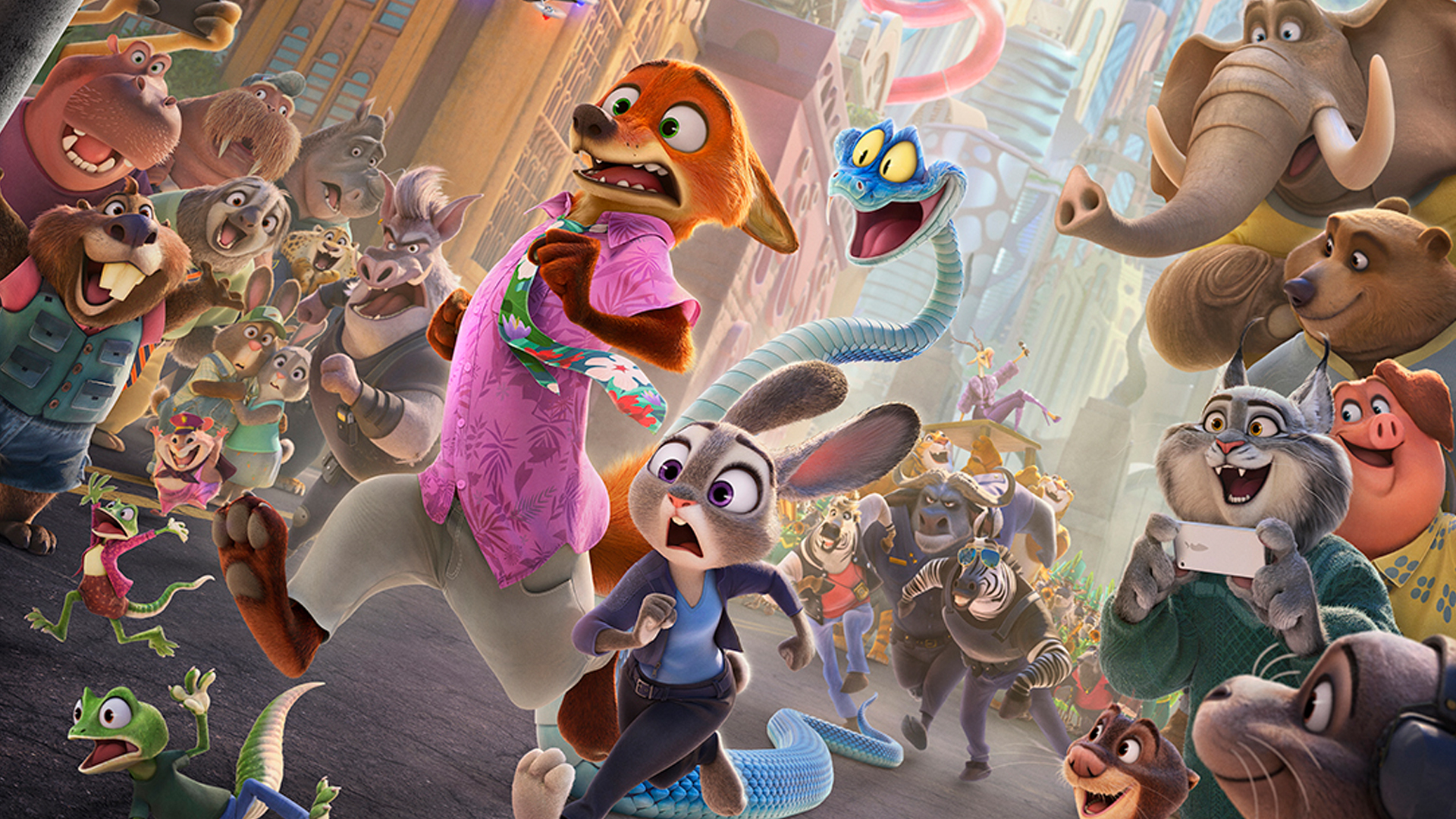Purrr....
- Different perspectives
- Giant mechanical duck
- Combat flexibility
Hisss!
- Items take up a slot
- Inconsistent use of 3D
- Movie visuals
Platform
3DSPublisher
AtlusDeveloper
FuRyuGenre
RPGPlayers
1Release Date (NA)
Mar 27, 2018Release Date (JP)
Jun 22, 2017A unique narrative and a deep but accessible combat system combine to make The Alliance Alive a great RPG.
I See Skies of Blue and Clouds of White
One thousand years ago, Daemons invaded the Human world because they saw the unstable energies brewing on the surface and deemed it a threat. After defeating Humanity, they created the Great Barrier, which affected the climate, blotted out the sun, and permanently darkened the skies. It also begat the Dark Current, which ripped the ocean into four areas, destroying countless cities and killing untold millions in the process, and afterward became an impenetrable barrier for anyone seeking to cross the waters. Physically cut off from the rest of the world and defeated militarily, Humans had no choice but to surrender.
In the centuries since then, the ruling Daemons have allowed the segregated Human societies to develop under their watchful eye, enlisting the Beastfolk to serve as their enforcers. And although Humanity exists at the bottom-rung of this society, their will to fight isn’t dead yet.
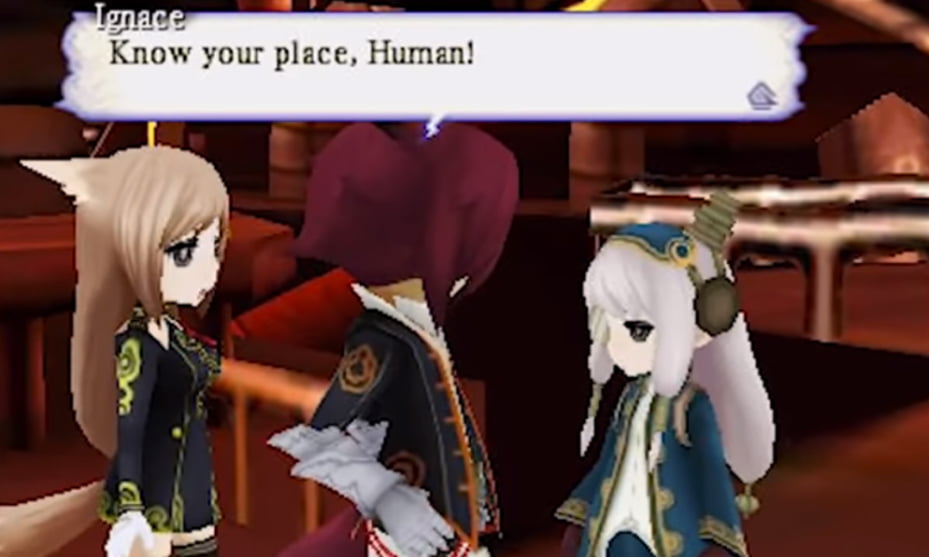
Among those who fight back are Galil and Azura, childhood friends and members of the resistance group “Night Ravens” led by Azura’s dad in a realm where it’s always raining. Per Japanese RPG tradition, they are teenagers, but unlike most games where the male is the lead, here, the female takes charge. Azura is the strong-willed go-getter, and when she hears a rumor about a painting that showcases a blue sky, she drags Galil with her to go find it, kicking off their grand adventure.
And it’s not just Azura who has this trait. As the story progresses and other playable characters are introduced, the females routinely outshine their respective male counterparts, be it the happy-go-lucky Daemon Vivian and her noble butler Ignace, or the mercenary Rachel hired by Gene the signimancer. Meanwhile, genius inventor Tiggy is a force of nature all by herself. When you encounter her, she considers you her lackeys and jokingly calls the one guy in your party “Doggy,” much to his annoyance.
Indeed, the Human, Daemon, and Beastfolk characters that make up your party sometimes squabble and don’t always trust in each other, but over the course of the game, their shared beliefs and goals make them a true alliance.
Chapters of the Chosen
The story of Alliance Alive is divided into chapters with each one showcasing the viewpoint of a particular set of characters. When the game begins, the focus is on Galil and Azura, but once a pivotal moment is reached, the narrative then changes to a different group and continues from there. Yes, the cliffhangers can be aggravating when you really want to see what happens next, but they do keep things interesting and happen naturally…mostly. There was one instance that comes to mind where I was ready to face a big boss after a long slog up a tower, but then the narrative suddenly switched to another, weaker group of characters who had to make the same climb. Fortunately, the monsters weren’t as powerful the second time around, but it was still a jarring experience. For the most part, though, the perspective switching works; and it’s actually kind of neat to see the storylines intersect and to witness the same events from a different viewpoint.
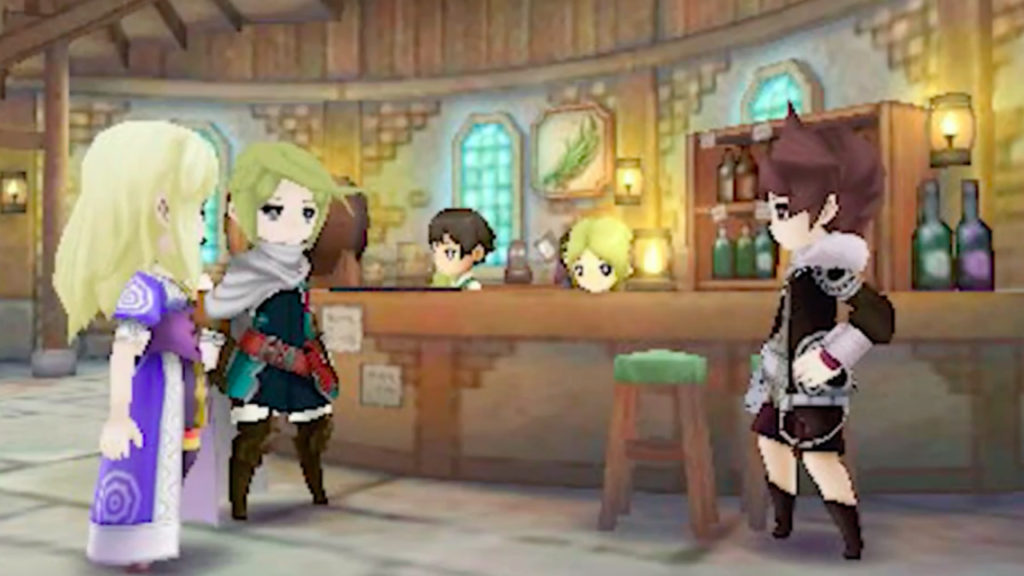
The differing perspectives even manages to works itself into the gameplay in small but sometimes important ways. When exploring, only one character from your party will appear on the map, but you can choose which one it is from the main status screen. Early on, it doesn’t matter, but when your party grows, non-player characters (NPCs) like Beastfolk guards who wouldn’t otherwise look at a Human are more than happy to reveal everything they know to a Daemon. Similarly, in the world of the game, Daemons are the only ones proficient with Spells, so if you need to unlock a door, make sure to select the right character first.
Occasionally, the characters will even be offered a choice on how to proceed in a given situation, such as deciding whether or not to allow a defeated creature to flee or choosing to intervene in a dispute between a few Human villagers and Beastfolk. The overall story continues regardless of what you pick, but I suspect that there are future benefits that result from certain decisions.
Regardless of which group of characters you’re playing as, the basic gameplay remains the same: equip your party, travel across the map, fight in battles, and build alliances.
And My Axe!
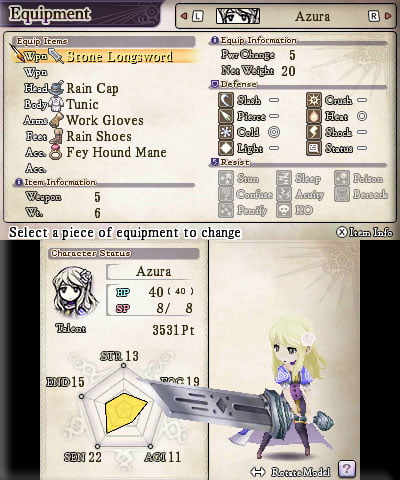
As with most RPGs, your characters will need weapons, armor, and other skills before they go out adventuring. (Fortunately, each new group of characters you meet receives enough money to cover a few basic pieces, so make sure to use it.) There are a couple key ways in which Alliance Alive differentiates itself from other games, for better or worse.
First is the use of items. Instead of being their own option in the battle screen for access at any time by anyone, you have to equip individual items to characters as accessories. Unfortunately, there are only two accessory slots per character, so you’ll have to give up at least one of them for the ability to only use one individual item like Flatbread or a poison cure. Thankfully, your party’s health is automatically restored at the end of a battle sequence and the Medicine Pack accessory allows the use of any item in your storage, but it’s still an unnecessary inconvenience.
Second, each character has the ability to carry two weapons at a time. Why? Two reasons: 1) There are eight weapon types in the game, and 2) weapons can break in battle, but only when you want them to.
The eight weapon types to choose from are sword, greatsword, spear, staff, bow, shield, axe, and unarmed, and every character can use any of them. At least, they can on paper. By default, characters have stats that make them strong in certain areas and weaker in others. However, you are mostly free to give these characters almost any role you want. For example, Azura doesn’t have a high strength stat to begin with, but if you want to give her a great sword, do it. Likewise, Barbarosa is more at home with an axe than a staff, but he can be a mage if need be. Consider it like a class-ish system.
That said, there are some restrictions. Only Daemons can use Spells (once learned), while Humans use magic called Signimancy. Basically, that means in order to cast magic, they need learn the spell and also equip magic-imbued weapons called Etheracts. Fortunately, magic vendors exist in pretty much all the major towns, but it can be a little hard at times to acquire decent magical weapons.
Keep in mind, though, that every piece of equipment you wear adds to your character’s net weight, affecting the order they take actions in battle. Those carrying two great swords and wearing heavy armor will often go last in a round after the enemy attacks, so it might not be a great idea to give those to healers whose spells need to be cast earlier. Of course, there are ways around this. There do exist strong armors that don’t weigh much, and you can always opt to only carry one weapon as long as you don’t voluntarily break it to perform a powerful attack.
Go Yonder

When you finally set out, it’s mostly your standard, world map experience, travelling through plains and forests, over mountains, across the ocean, and through the skies. Naturally, accessing some locations requires owning specific vehicles, from an ornithopter to the inevitable airship, but the best of these is easily the giant, mechanical duck. (Yes, you read that right.) It’s undoubtedly one of the most amusing crafts in all JRPG-dom. Fast travel between the major cities is also available once you get far enough into the game.
Whether you’re walking or waddling, be sure to explore every nook and cranny for the presence of shining dots. Yellow dots are Order Gems, which allow you to retry or flee a battle if you’re defeated, and purple ones are Chaosium Gems which are used to buy powerful items from special merchants. Many of these are really expensive, but thankfully, special enemies sometimes drop them as well.
You’ll also see (and hear) shadow beasts on the map screen. These represent enemy encounters, and when you touch one, a battle begins. If you’re lucky or skilled enough to sneak up on one, you can strike preemptively, but on the other hand, if you’re caught by surprise, you’ll be the one on the receiving end. Moreover, if there are two or more beasts in close proximity to one another, it’ll start a Battle Chain where you fight each group one right after the other with no automatic healing in-between and no chance to escape. However, if you overcome the onslaught, you will obtain extra skill points for your trouble.
Resistance Tactics
Battles in Alliance Alive are turn-based. That’s the short version. The long version is that when fighting, you have to consider group formations, Arts, Talents, and Final StrikesIgnitions in order to maximize your chances of survival. It’s certainly a lot to learn — it didn’t click for me until about ten hours into the game — but it’s not overly complicated.
A formation is a combination of where your characters are placed in a 3×5 grid (i.e., their Line) and their role in the party (i.e., their Position). Facing the enemy, your party members stand in one of three Lines: the front, the middle, or the back. Those in front hit harder and are more likely to be targeted by enemies, while those in the back do less damage but are also not attacked as often, with the middle row being a kind of compromise between the two. Enemy parties also have Lines, with the same rules applying to them, so choose your targets wisely.
Positions also have three options: Attack, Guard, and Support. Attack increases your damage-dealing skills; Guard decreases the damage that character takes and applies their defensive skills to the whole party; and Support improves your movement speed and the potency of healing spells and items.
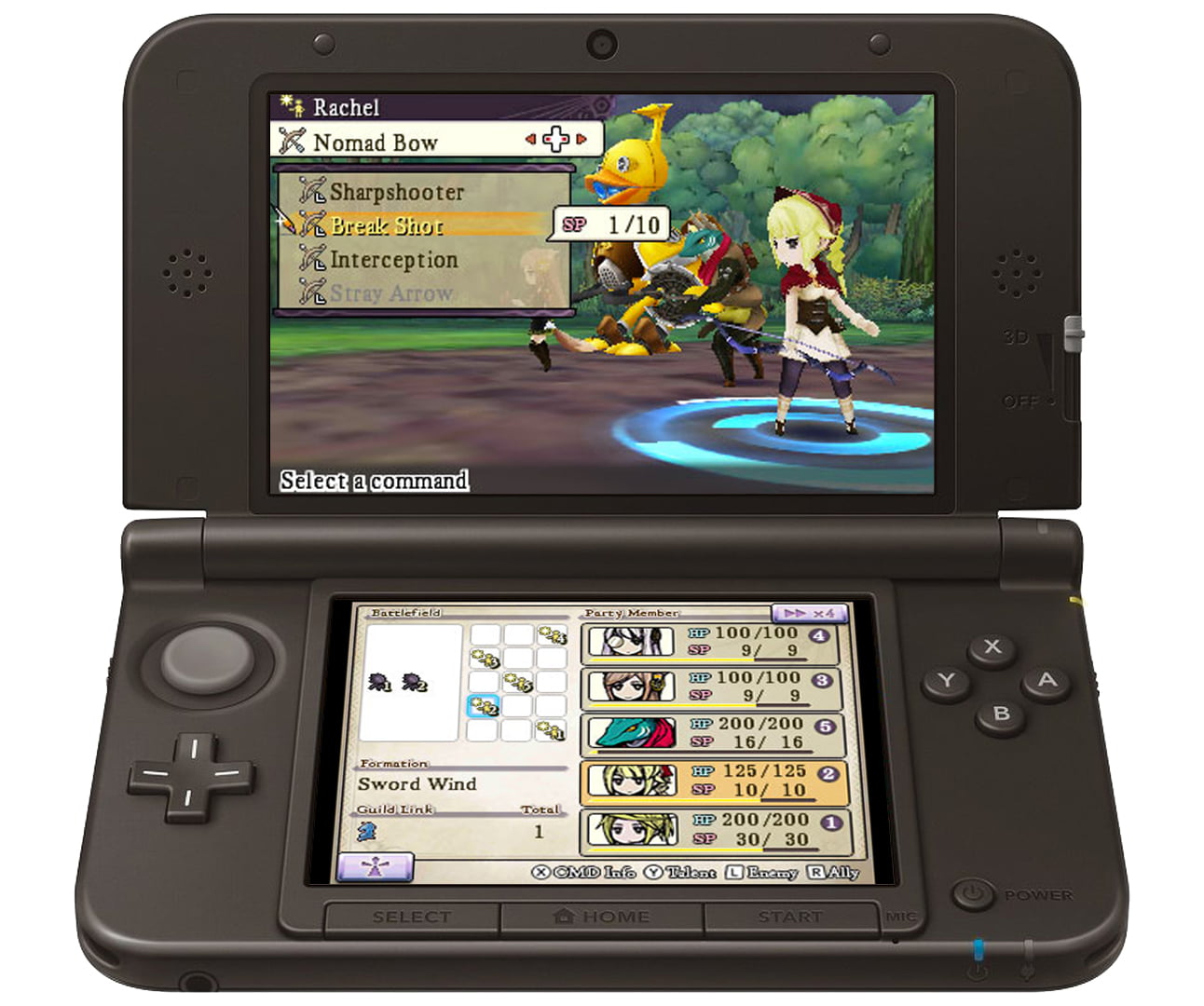
Several different formations exist by default, with each group changing based on the number of characters in your party at the time. For the most part, you can pick from those and be fine for most encounters, but if you find yourself in a bit of trouble in a particular fight, you do have the option of switching formations during battle. For those players who want to tweak their formations even further, you can visit the Tactics Guild and build one from the ground up.
Once your formation is decided, you actually have to start attacking the enemy. That’s where Arts come in. Recall that you have eight weapon types: sword, greatsword, spear, staff, bow, shield, axe, and unarmed. Arts are the actual attack skills associated with each one of these, each one costing Skill Points (SP) every time they’re used in battle, and at first, you only know one or two basic skills for each type.
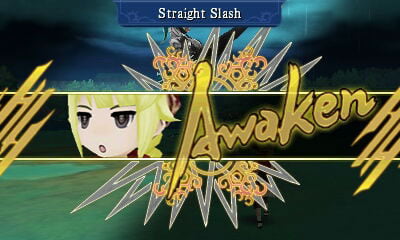
The only way to learn more is to keep using skills for that weapon and hope you trigger an Awakening, which are moments where your character suddenly figures out how to perform a new attack with it. It’s preceded by a short cutscene showing a close-up of your character’s face and followed by them actually performing the move, and as far as I can tell, these revelatory moments are completely random. You could be fighting a regular enemy or a boss; it doesn’t matter. Moreover, the Art learned is mostly unpredictable as well. Early on, I died after learning the unarmed skill “Roundhouse Kick,” and after reloading, I learned “Serious Punch” instead. That said, some Arts are more likely to appear than others. All characters learn the same Arts for a non-magical weapon, and most learned low-level Arts before higher-level ones.
Each Art has its own stats, such as type and Position Level. Type works in conjunction with a character’s Line location. Basically, if you’re using a short-distance attack on an enemy a long ways away, the attack won’t do the maximum amount of damage. Similarly, Position Levels function based on your Position; the more you use the Art when your character is assigned an Attack or Guard role, the more effective it’ll be. The levels increase the more you battle, so make sure you’re getting the most out of the Art.
In addition to Arts, which would be considered active skills in other RPGs, there are passive skills called Talents. Most Talents tie into the various weapon types, allowing you to perform special attacks at a reduced SP cost, but there are also those that support your characters outside of battle. For example, one makes it harder for enemies on the map to detect you, allowing you to sneak up on it or run past it, while another reduces the prices of goods at shops. Some Talents even improve the chances of receiving a stat boost at the end of battle.
Talents aren’t free, though. Although all characters do start with one or two Talents learned for their original weapon of choice, unlocking other skills requires the use of Talent Points (TP). Low-level weapon talents are pretty cheap, only costing a few hundreds TP, but the highest ones easily run into the tens of thousands. (For those players who want to get a head start, play the Alliance Alive demo on the Nintendo eShop to earn up to 4,000 TP which can be transferred to the full game.)
Talents, Arts, and Awakenings can be strengthened even further if they happen during a heightened character state known as an Ignition. To get there, you have to fill a yellow meter by dealing and taking damage or even having characters die in battle. Once its maxed out — a process that can take some time — you can take advantage of the benefits. However, the main reason for being in this condition is to use a special move called a Final Strike. True to its name, it’s an immensely powerful attack that’s so strong, it breaks the weapon you’re currently using. It’s great for boss battles and tough enemies, but if you do use it, make sure you have a spare laying around since it renders the weapon unusable. Fortunately, the broken weapon can be repaired at one of the guilds for a price. Still, don’t be afraid to break a few if you need it; after all, once the battle ends, you’ll have to build it up again.
If you manage to survive, the encounter, you’re rewarded with money, skills points, and occasionally, a hit point (HP) or SP boost. There are no visible experience points (XP) shown on the status screen, so you’re mostly reliant on pure chance. It is possible to increase the odds by spending TP for the relevant skill, though. On the other hand, if you lose a battle or opt to run away, your character(s) will suffer a temporary loss of HP and even SP. The only ways to restore them to their maximum levels are to use items or to rest at an inn or a guild. I recommend the latter when possible since it’s free and is just one of the many great services they offer.
For the Alliance!
Guilds exist everywhere, and since they’re run by Humans, they are automatically on your side in your quest to liberate the world from Daemon rule. There are five guilds — Library, Blacksmith, Recon, Signimancy, and Tactics — and each one assists your party in different ways. For example, the Blacksmith Guild can craft weapons and armor for you, while the Signimancy Guild allows for the research and creation of new spells. Meanwhile, the Library Guild keeps a record of your adventure, allowing you to read summaries of the story re-watch movie cutscenes, or view vehicle and character data.
Even if you’re out in the field and are close to an active guild tower, they will sometimes help you during battle. The aforementioned Library Guild will provide real-time information about monsters or lower enemy defenses. Other guilds will provide other stat bonuses or just simply attack all enemies on the screen.
As the game progresses, you can start recruiting people to join the various guilds and ultimately increase each guild’s powers. You’ll even gain the means in which to build guild towers around the world to reap the benefits and also bring Humanity back together. In short, it pays to have as many guilds working for you as possible, and it really feels like everyone is working together for a better future.

Art of the Resistance
The Alliance Alive soundtrack by composer Masashi Hamauzu shares in this idea of bringing different flavors of music together, creating an eclectic mix of the familiar and the far out. For example, in Svalna, the main town in the Rain Realm where Humans are oppressed and treated like “filthy apes,” the music is suitably somber and dreary. Likewise, the Living Forest is predictably enchanting and mysterious with a hint of menace, while the echoed tones of the Ancient Museum underscore its age and sacredness.
On the other hand, the world map music for the Burning Realm, a land where a volcano constantly spits flames into the air, has a futuristic feel to it that strangely works. Then, there are tracks like the guild theme, which possesses an addictive energy all its own with literal bangs going off in the background. Honestly, I wasn’t sure whether I liked it or not upon hearing it the first few times, but now I always look forward to guild visits because of it. (It’s also the fact that there is no separate battle track when you encounter an enemy on the world map, but that’s beside the point. There is a proper battle theme in the game; you’ll just only hear it in dungeons.)
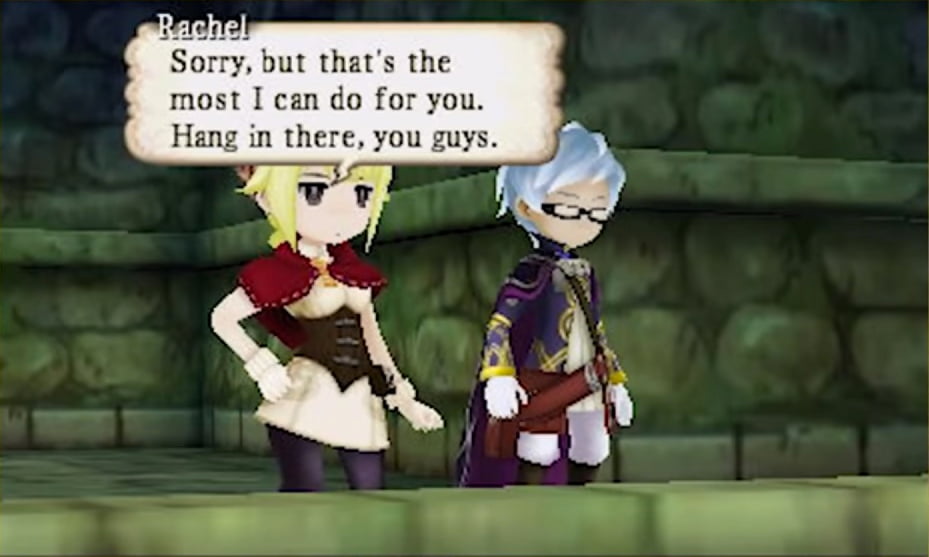
The visuals also continue this theme of combining disparate elements to an extent. Take the design of the main characters themselves; they’re both simple and complex. The basic Human doll model is the so-called “chibi” with large, U-shaped eyes, no nose, and stumps instead of feet. However, the clothing and accessories they wear is quite detailed with intricate little design flourishes. Similarly, in Svalna, most of the houses have low polygon counts and moderately blurry textures, but their layered look plus their yellow and pink rooftops somehow give them a storybook feel; it’s odd how it kind of works. Plus, if you stand still for roughly five seconds, the camera will automatically zoom way out and give you an amazing view of the entire area in one shot. (Make sure to set the 3D slider on your system to its max when this happens to make it even more cool.)
There are some areas where the visuals do disappoint, though. The aforementioned use of 3D effects is sadly inconsistent. Aside from the zoomed-out views in towns and other areas like the entrance to the Ancient Museum, 3D is only really used on the game’s title screen, the formation screen in the status menu, and when viewing character models. Unfortunately, I imagine a number of players will miss out on some of the best graphical instances in the game because of this (unless they read this review).
In addition to the random use of 3D, the movies are another source of dissatisfaction for two reasons. One, the movies are shown in widescreen, complete with large, horizontal, black bars above and below the main picture. Granted, the top screen of the 3DS XL is pretty big, but only half the screen is actually used as a result. I’m not saying I’m squinting, but this seemed unnecessary, especially because of the second reason. The movies are blurry. It’s obvious that compression went on to make the game’s overall file size as small as possible, but what’s puzzling is that some of the movies don’t even have anything special going on, graphics-wise. More than one movie is just a straightforward dialogue scene between characters using their normal in-game models, so why even bother making a movie out of it?
The Resistances Lives On
Overall, The Alliance Alive is a solid RPG with a unique narrative structure, a deep but accessible combat system, a nifty soundtrack, and a couple small graphical annoyances. Considering the portability and power of the Nintendo Switch, it also might be one of the last great RPGs for the 3DS, so don’t let the handheld disappear without a good fight.
Disclaimer: A digital review copy was provided by Atlus USA.
